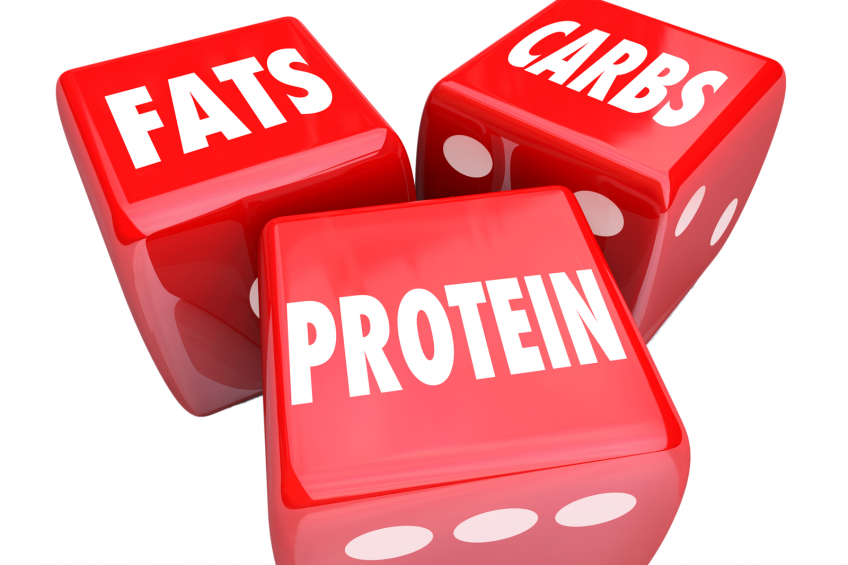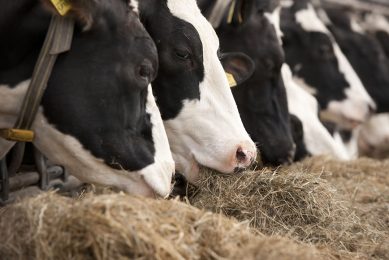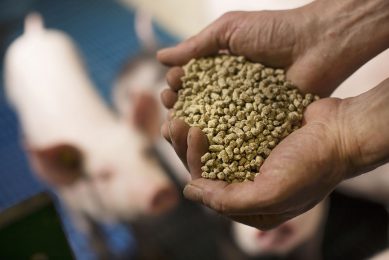Helping the big 3 in animal nutrition

Growing attention is being paid to the influence of nutritional strategies on gut health and microbiota. Understanding the three nutritional components of carbohydrates, protein and fat is crucial in the approach to optimising gut health. Even when these three are perfectly balanced, feed additives can offer essential support.
With the decrease in the use of antibiotics, enteric diseases are increasingly causing concern in today’s animal husbandry. The most common swine gut pathogens are B. hyodysenteriae (dysentery), E. coli (weaning diarrhoea), Salmonella, Clostridium, and L. intracellularis (PIA); while, in poultry, Clostridium (necrotic enteritis), Salmonella, Campylobacter, E. coli and Brachyspira are the most commonly dealt with disorders. Despite the fact that it’s often possible to cure animals after an infection, the damage to the gut is irreversible and leads to diminished performance and extensive financial losses. Consequently, it is of utmost importance to steer gut health via nutritional pathways.
Gut health is a complex interaction between the intestines, the feed and the resident bacteria in the gut (Figure 1). Influencing one of these three factors inevitably results in either a positive or a negative change in gut health. The easiest factor to influence − and in this way to steer gut health − is the feed, which consists primarily of carbohydrates, proteins and fat. Together with feed additives, these three components make an important contribution to regulating the health of the animal’s gut.
Figure 1 – Schematic representation of gut health.

Carbohydrates and fibre
Carbohydrates can be divided into sugars, oligosaccharides and two classes of polysaccharides, starch and non-starch polysaccharides (NSP). NSP, together with lignin, is defined as dietary fibre (DF). Both the source and the level of fibre in the diet are important parameters for influencing gut health. Classification of fibre is mainly based on its solubility and their fermentability. Highly soluble fibre sources like pectin or guar gum increase the viscosity and hydration properties of feed, whereas insoluble fibre sources accelerate the passage of the feed through the gut. Fibre is fermented by carbohydrate-degrading microbiota, which transform polysaccharides into volatile fatty acids. These fatty acids can be used as an energy source for the enterocytes. It is important to choose the right combination of fibre sources in function of their fermentability: some sources ferment right away in the gut, while others take much more time to ferment. By making the right combinations, fermentation will take place over the entire hind gut, not only at the beginning or the end. This way, dietary fibre interacts with both the gut mucosa and the microbiota and, consequently, plays an important role in the control of gut health.
On the one hand, high fibre levels have a good effect on gut health, which leads to better performance. On the other hand, fibre contains only low amounts of energy and proteins, both of which are essential for growth. Furthermore, high fibre levels increase the feeling of saturation, thus reducing feed intake. Finding a balance between optimal performance and excellent gut health is one of the biggest challenges in animal nutrition.
Protein conversion
Transforming vegetable protein into animal protein is the primary objective in animal husbandry. The efficacy of this transformation is reflected in the animal’s performance, which is largely related to the protein level of the feed and the digestibility of the specific protein sources used. Due to the higher pH levels in the stomach and the lower levels of enzyme production, young animals, in particular, have trouble digesting the protein in the feed. Undigested protein is used in the hind gut as a substrate for microbiota and is transformed into amines and urea. This leads to a shift in the microbiota that is favourable to E. coli, eventually leading to colibacillosis.
Lowering protein levels in the feed is one way to reduce the risk of protein diarrhoea. Logically, lower protein input (from the feed) also leads to lower protein output (meat production). The addition of synthetic essential amino acids reduces this negative effect on growth performance. Lysine, methionine, threonine, tryptophan and valine are the five available synthetic amino acids. The essential amino acids − isoleucine and leucine − cannot be added synthetically. Consequently, the level of these amino acids in the feed can only be influenced by changing the feed’s crude protein level and shifting the protein sources. This means that there is a limit to lowering the crude protein level, and this level depends on the raw materials that are available.
The second way to reduce the risk of diarrhoea is to improve the digestibility of the protein. This can be done by adding digestibility enhancers (enzymes) or by using raw materials that are more digestible. Soybean meal is the most commonly used protein source worldwide. Young animals can have difficulties digesting regular soybean meal because of the anti-nutritional factors. Using more processed sources of soybean meal and combining it with other high value protein sources (animal or vegetable) can lead to greater digestibility and a more suitable amino acid profile. This was shown in a trial in which soybean meal was replaced with a high value protein mix (Vitaprotein), see Table 1. The average daily weight gain rose by 14%, and the feed conversion dropped by 11% − which was not only a technical improvement but a very cost-effective result as well.
Effects of fat levels
Whereas the influence of fibre and protein on gut health is widely documented, the effects of fat levels and fat sources are less prevalent in the literature. Nevertheless, this doesn’t mean that fat levels and fat sources do not influence the health of the gastro-intestinal tract. It has been shown that high levels of fat may lead to increased colonic permeability for gut products like lipopolysaccharides (LPS), which can cause inflammation, locally in the colon, or even systemically, especially in diets with low fibre content. Adding a natural antioxidant (Vitanox) to lower oxidative stress in the gut − decreasing inflammation and gut permeability − can be considered in cases in which high fat diets are combined with stress situations.
Good quality fat is better digested in the small intestine, leaving lower amounts of substrate in the hind gut for the microbiota. Fat quality can be measured by the saturation level, the quantity of free fatty acids, and the peroxide level. In hot and humid conditions, in particular, it is extremely important to add an antioxidant to the fat as soon as possible. In moments of high anti-microbial pressure in the gut, certain pathogenic bacteria can transform bile salt into bile acid, which reduces fat digestion. This means that not only does fat digestion influence gut health, but that gut health also influences fat digestion. Functional feed ingredients with emulsifying properties (Vitamul) can restore fat digestion when lower-quality fats are used or when there are not enough bile salts available for emulsification.
Finally, in addition to examining the carbohydrate, protein and fat content, the equilibrium between them should also be taken into account to avoid excesses of building blocks or energy. Even when these three are perfectly balanced, feed additives can offer essential support. Nuscience combines medium chain fatty acids with prebiotics to support gut health.
A synergistic approach to gut health
Nuscience has developed a natural growth-promoting concept: Vita GP which combines the strong anti-microbial properties of medium chain fatty acids (MCFA) in the stomach with effective protection of the hind gut by a prebiotic fibre source. Thanks to their immediate anti-microbial activity, MCFA erect a first barrier in the stomach, before the pathogens cause any damage. The resulting lower pathogen load effectuates an improved gut morphology, with longer villi and a better villi/crypt ratio in the small intestine. This leads to greater nutrient digestibility and better performance. A prebiotic is a functional feed ingredient which is often used as an energy source for the microbiota, creating a surplus of beneficial bacteria. The prebiotic fibre source used in Vita GP works on a different pathway − capturing the pathogenic bacteria and simply washing them out of the body. It is soluble but not fermentable. Thanks to its solubility, it is able to agglutinate all bacteria that have flagellae, including Brachyspira, Lawsonia, Salmonella and Coli. The fibre source is not fermentable and leaves the body along with the agglutinated pathogens.











